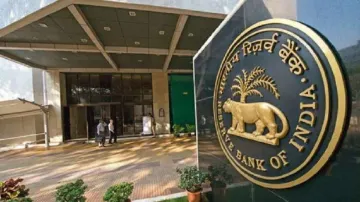The Reserve Bank of India (RBI) will pay a record dividend of Rs 2.1 lakh crore to the government for the fiscal year ending March 31, significantly exceeding the budgeted expectation. This payout is more than double the anticipated amount, providing a substantial boost to government revenue just before the new administration takes office. During its 608th meeting last week, the RBI board approved the transfer of this surplus, as per an official statement by the RBI.
The government had initially budgeted for Rs 1.02 lakh crore in dividends from the RBI, public sector banks, and financial institutions in the interim budget for the fiscal year 2024-25 (April 2024 to March 2025) presented in February. The dividend or surplus transfer by the RBI to the Centre was Rs 87,416 crore for the fiscal 2022-23.
The previous high was Rs 1.76 lakh crore in 2018-19. "The Board approved the transfer of Rs 2,10,874 crore as surplus to the Central Government for the accounting year 2023-24," the RBI said in the statement.
The central government aims to contain the fiscal deficit or gap between expenditure and revenue to Rs 17.34 lakh crore (5.1 per cent of the GDP) during the current financial year. The RBI said that during accounting years 2018-19 to 2021-22, owing to the prevailing macroeconomic conditions and the onslaught of the Covid-19 pandemic, the Board had decided to maintain the Contingent Risk Buffer (CRB) at 5.50 per cent of the Reserve Bank’s balance sheet size to support growth and overall economic activity.
Why does RBI pay dividend to govt?
After setting aside reserves for contingencies and ensuring its financial stability, the Reserve Bank of India transfers a part of its surplus profits to the government. This dividend fulfills two important roles: it provides a substantial income source for the government, helping to close the gap between its expenditure and revenue, and it can also contribute to reducing the fiscal deficit, thereby promoting economic stability.
How does RBI earn money to pay dividend to govt?
The Reserve Bank of India (RBI) generates substantial income from various sources, including the printing of currency notes. For instance, if it costs Rs 2 to print a Rs 500 note, the RBI earns a profit of Rs 498 when the note is put into circulation. Additionally, the RBI earns interest from buying and selling government bonds and lending to commercial banks. Profits are also accrued from its dealings in the foreign exchange market.
The Reserve Bank of India can also invest in foreign assets, such as US government bonds, earning interest and gaining exposure to the dollar. Alternatively, the RBI can buy and hold dollars directly. When the dollar's value increases, the RBI can sell the dollars and make profits. Last year, by strategically buying low and selling high, the RBI made over Rs 1 lakh crore through forex trades.
ALSO READ: Indian forex reserve reaches all-time high with $648.7 billion for the week ending May 17: RBI
